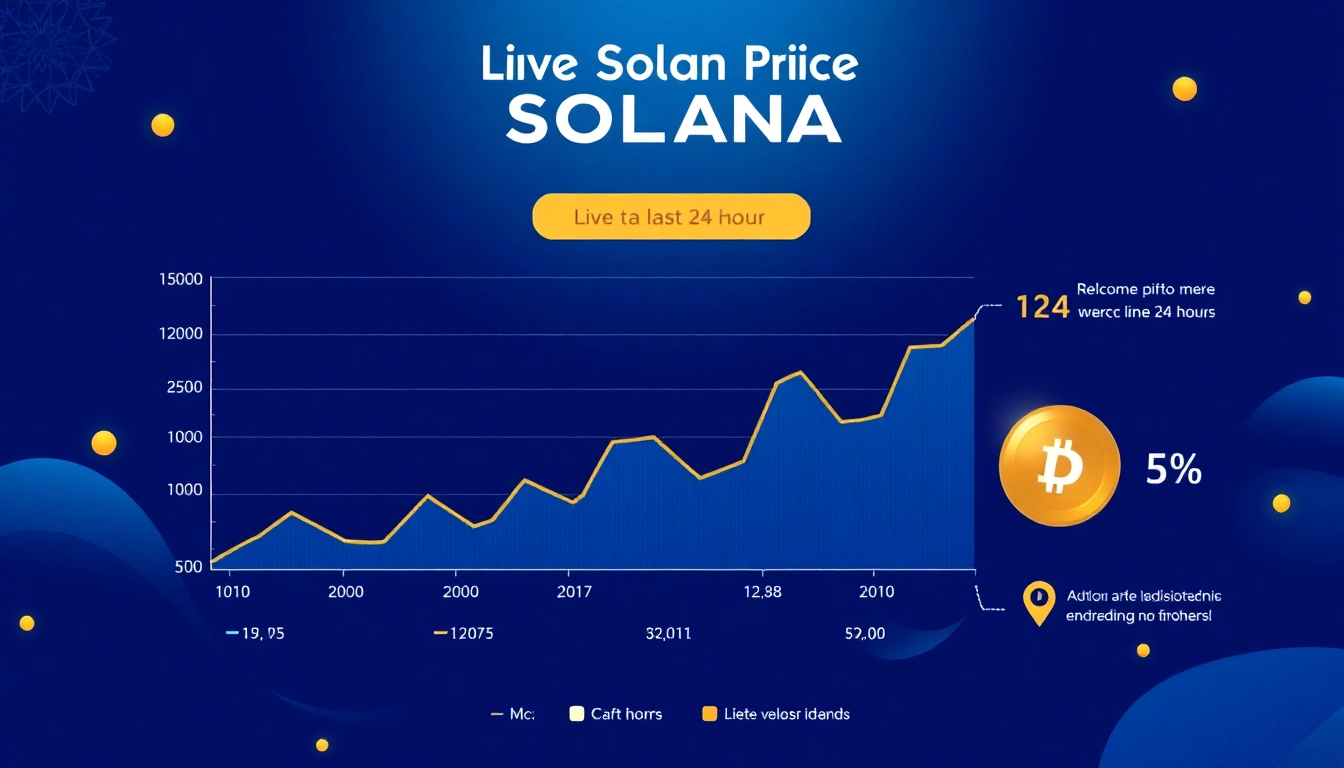Understanding Ethereum Price USD: A Comprehensive Guide
The landscape of cryptocurrency is as dynamic as it is intricate, with prices constantly fluctuating in response to an array of factors. Among the most intriguing and debated topics is the ethereum price usd. This guide is designed to delve into the myriad influences that shape Ethereum’s market value, provide tools for real-time monitoring, and equip investors with strategies to capitalize on price movements.
What Influences the Ethereum Price?
The price of Ethereum is influenced by a combination of market dynamics, technological developments, and external economic factors. Understanding these can provide better insight for investors and traders.
- Market Demand and Supply: The fundamental principles of economics come into play—higher demand with limited supply tends to increase prices. Ethereum’s maximum supply is not capped, unlike Bitcoin, which leads to unique supply-demand dynamics.
- Technological Developments: Upgrades to the Ethereum network, such as Ethereum 2.0, which promises better scalability, security, and sustainability, can significantly influence prices. Any developments related to these upgrades can inspire investor confidence or caution.
- Regulatory News: Cryptocurrency operates in a gray regulatory area in many regions. Regulatory announcements, especially from major economies, can cause price volatility. Positive news can lead to price surges, while negative perspectives often result in dips.
- Investor Sentiment: Market psychology plays a pivotal role. Fear, uncertainty, and greed can lead to dramatic shifts in demand. Tools such as social media sentiment analysis can help gauge investor feelings and predict possible price movements.
- Competing Cryptocurrencies: The rise of competitor platforms like Solana or Cardano can draw investment away from Ethereum, impacting its price negatively. Investors often compare the technology, use cases, and potential of these alternatives against Ethereum.
Market Factors Affecting Ethereum Value
A multitude of market factors contributes to Ethereum’s valuation. Fundamental analysis involves examining these variables that can influence pricing:
- Trading Volume: Higher trading volumes can indicate strong interest in the asset, often correlating with price increases.
- Market Capitalization: As a measure of the total value of all ETH in circulation, changes in market cap can provide insights into the asset’s stability and investor confidence.
- Market Sentiment: Platforms such as Twitter, Reddit, and specialized crypto forums often reflect the prevailing mood in the cryptocurrency world. Positive or negative news, memes, and discussions can sway public sentiment and, consequently, market movements.
Understanding Price Volatility in Cryptocurrency
Ethereum is characterized by significant price volatility. Factors contributing to this volatility include:
- Market Speculation: The speculative nature of cryptocurrencies creates price swings. Traders often buy and sell based on short-term price movements rather than intrinsic value, leading to volatility.
- Trading Bots and Algorithms: Automated trading can cause rapid price changes. These programs can execute trades based on pre-defined conditions, impacting supply and demand significantly in a short time frame.
- External Economic Factors: Global events, such as economic recessions, pandemics, or changes in fiat currencies, can influence crypto prices. For instance, during economic uncertainty, investors may flock to cryptocurrencies as a hedge.
Real-Time Ethereum Price Monitoring Tools
For investors wishing to stay abreast of Ethereum’s current market value, real-time monitoring tools are essential. Here is a breakdown of the most effective resources:
Top Platforms for Ethereum Price Updates
There are numerous platforms available that provide live updates on Ethereum prices:
- CoinMarketCap: Offers comprehensive crypto price info, including historical data and market cap.
- CoinGecko: Known for its detailed analytic tools, it provides insights into price movements, trading volume, and active addresses.
- Binance: As one of the largest exchanges globally, Binance provides real-time price access and trading capabilities for Ethereum.
- TradingView: A popular choice among traders for technical analysis, offering advanced charting tools that can help in analysing price trends.
- Kraken: Offers accurate price updates alongside various features for trading and market analysis.
Setting Up Price Alerts for Ethereum
To ensure that you don’t miss critical changes in Ethereum’s price, consider setting up alerts on your chosen platform. Most of the major exchanges and price tracking websites allow users to configure notifications when Ethereum reaches certain price points or experiences significant percentage changes.
Data Accuracy: How to Ensure Reliable Price Tracking
When monitoring prices, ensuring the accuracy of the data is crucial. Here are some tips to maintain reliability:
- Choose Reputable Sources: Always rely on well-known and established platforms that have a reputation for accuracy and transparency.
- Cross-Reference Data: Use multiple platforms to compare prices. Discrepancies can occur, so verifying across sources can provide clarity.
- Stay Updated: Follow trustworthy news outlets and updates from major exchanges to stay informed about any changes affecting the market.
Investment Strategies Based on Ethereum Price Trends
Investing in Ethereum requires strategic approaches, particularly in navigating its volatility. Here are some methods worth considering:
Long-Term vs. Short-Term Ethereum Investments
Understanding your investment horizon is crucial. Here’s a comparison:
- Long-Term Investment: This involves holding Ethereum for an extended period, ideally to benefit from its potential appreciation over time. Investors adopting this strategy often believe in the long-term viability of the Ethereum network and anticipate that technological adoption, partnerships, and scalability will drive price increases.
- Short-Term Trading: By capitalizing on small price movements within short time frames, traders can maximize profits. This strategy involves looking for opportunities through day trading or swing trading, relying heavily on technical analysis and price patterns.
Technical Analysis: Reading Ethereum Price Charts
Technical analysis is a vital skill for traders looking to predict price movements based on historical data. It involves studying price charts to identify trends and patterns. Some key components include:
- Support and Resistance Levels: Identifying where prices tend to “bounce” or “drop” can inform buy and sell decisions.
- Moving Averages: This helps in smoothing out price data to create a trend-following indicator. The most common are the 50-day and 200-day moving averages.
- Volume Analysis: Analyzing trading volumes alongside price action can provide insight into the strength of a price trend.
Risk Management Approaches for Ethereum Traders
With high volatility comes inherent risk. Implementing solid risk management techniques is vital. Here are strategies you might use:
- Diversification: Don’t put all your investments in one asset class. Consider diversifying your crypto portfolio by investing in various coins alongside Ethereum.
- Setting Stop-Loss Orders: Use stop-loss orders to minimize potential losses on trades. When a specific price point is reached, the order automatically triggers a sale.
- Position Sizing: Determine the amount you are willing to risk in each trade. Limiting your exposure can help in managing overall investment risk.
Ethereum Price Predictions: Insights from Experts
Predicting future price movements is challenging; however, expert analyses can provide valuable insights to assist investors in making informed decisions. Here’s how to interpret expert opinions:
Analyzing Historical Ethereum Price Movements
Understanding past price trends can offer key insights into future movements. For instance, examining key cycles and levels during past bull and bear markets may provide context and help in developing predictive models.
Expert Opinions on Future Ethereum Price Trends
Experts often weigh in with price predictions based on various factors including network developments, adoption rates, and macroeconomic indicators. Regularly follow reliable sources and thought leaders in the crypto space to gather a range of expert opinions.
Market Sentiment and its Impact on Ethereum Prices
Public sentiment typically drives prices in the short term. Keep track of news sentiment, social media discussions, and market trends. Monitoring fear and greed indicators can offer insights into potential price movements.
Case Studies: Success Stories in Trading Ethereum
Learning from successful investors can provide the knowledge needed to navigate the Ethereum market effectively. Below are key takeaways from successful Ethereum trading cases:
Learning from Successful Ethereum Investors
Many successful Ethereum investors have demonstrated that a patient, informed approach tends to yield positive results. Documented case studies often highlight their strategies, including the importance of research, timing entry points, and holding through volatility.
Common Mistakes to Avoid When Trading Ethereum
Some common pitfalls include:
- Overtrading: Frequently buying and selling can lead to unnecessary losses and fees.
- Ignoring Market News: Failing to stay updated can lead to trading decisions based on outdated or incorrect information.
- Lack of a Clear Strategy: Trading without a specific plan often results in emotional decision-making.
Performance Metrics: Analyzing Successful Trades
Successful traders often emphasize the importance of measuring trade performance metrics. Metrics such as win-loss ratio, average gain vs loss, and the risk-to-reward ratio can guide future trades and strategy adjustments.



